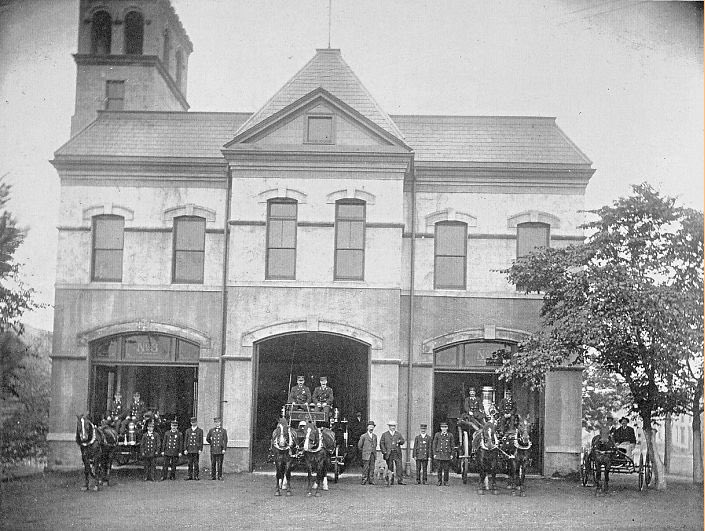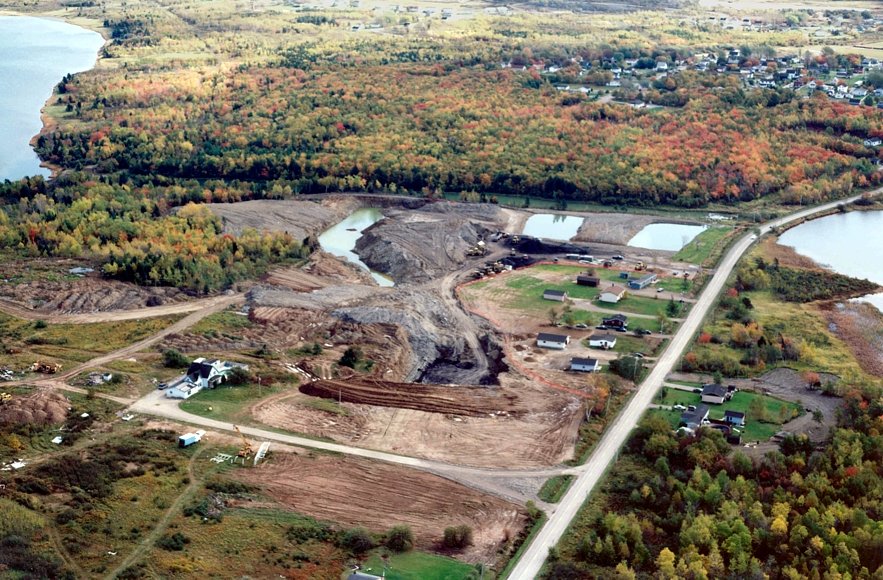#SydneyMines played a key role in #NovaScotia’s coal mining and industrial history.
Here's the story...
#nspoli #cbpoli #CapeBreton #nshistory @HomeMattersCB @JaimeBattiste @CBRMGov @AllanMacMaster @KCoombesMLA #coal


Here's the story...
#nspoli #cbpoli #CapeBreton #nshistory @HomeMattersCB @JaimeBattiste @CBRMGov @AllanMacMaster @KCoombesMLA #coal



#SydneyMines was named after Thomas Townshend (1733-1800), First Viscount Sydney, who was British Home Secretary in the Pitt Government in the 1780s. He was an important player in negotiating the Canada-US border.
#nspoli #cbpoli #CapeBreton #novascotia #nshistory
#nspoli #cbpoli #CapeBreton #novascotia #nshistory

He felt the British needed to keep Canada so loyalists – Americans who supported the British side in the US War of Independence - would have a safe haven to go to after the war.
#nspoli #cbpoli #CapeBreton #novascotia #nshistory
#nspoli #cbpoli #CapeBreton #novascotia #nshistory

Were it not for him taking a stand on the issue, the Canada-US border would likely be much further north than it is.
Townshend was also the person who devised the plan in 1786 to send convicts to Australia’s Botany Bay.
#nspoli #cbpoli #CapeBreton #novascotia #nshistory
Townshend was also the person who devised the plan in 1786 to send convicts to Australia’s Botany Bay.
#nspoli #cbpoli #CapeBreton #novascotia #nshistory

#SydneyMines was originally known just as “the Mines” because of its coal mines.
#nspoli #cbpoli #CapeBreton #novascotia #nshistory
#nspoli #cbpoli #CapeBreton #novascotia #nshistory

It also used to be called Lazytown because farmers found few people out and about when they came to sell food early in the morning. The farmers didn’t know coal miners woke at dawn and were already at work when the farmers got there!
#nspoli #cbpoli #CapeBreton #novascotia
#nspoli #cbpoli #CapeBreton #novascotia

It was long known that coal existed in the area. Governor of Canso and Isle Royale, Nicolas Denys (1598-1688), noted the presence of coal there in his 1672 book, “Description and Natural History of the Coasts of North America.”
#nspoli #cbpoli #CapeBreton #novascotia #nshistory
#nspoli #cbpoli #CapeBreton #novascotia #nshistory

Coal was shipped from Spanish Bay (later renamed Sydney) to Boston in 1724 and to Martinique in 1732.
After Fortress #Louisbourg fell to the British in 1745, The British built a blockhouse fort at Burnt Head and mined coal from the Sydney area to keep warm.
#nspoli #cbpoli
After Fortress #Louisbourg fell to the British in 1745, The British built a blockhouse fort at Burnt Head and mined coal from the Sydney area to keep warm.
#nspoli #cbpoli

After the second capture of Fortress #Louisbourg in 1758, mining continued around Sydney, sometimes illegally – there’s a long history of bootleggers and smugglers prying coal out of outcrops for their own use or to sell.
#nspoli #cbpoli #CapeBreton #novascotia #nshistory
#nspoli #cbpoli #CapeBreton #novascotia #nshistory

In 1766, 4 Halifax merchants were granted an exclusive right to dig coal anywhere from places where His Majesty’s troops were already doing so for the garrisons. They opened a mine at Spanish River (now called Sydney River). In 1777, 40 soldiers were employed digging coal there. 

During the administration of Cape Breton Governor DesBarres from 1784-1787, the mines were worked for the government and a wharf was built to ship coal.
Between 1788-1826 mining rights were leased to various promoters.
#nspoli #cbpoli #CapeBreton #novascotia #nshistory
Between 1788-1826 mining rights were leased to various promoters.
#nspoli #cbpoli #CapeBreton #novascotia #nshistory

In 1826-27, the General Mining Association was given a monopoly on most #NovaScotia coal, which lasted until 1857. The first shaft at #SydneyMines was sunk in 1830. A temporary railway was built from the pit to the old wharf and an iron foundry with fitting shops, lathes and... 

...equipment for repairing mining machinery was established.
Another shaft was sunk in 1834 and a three-mile railway was completed from the pits to North Sydney. Locomotives were introduced in 1853.
#nspoli #cbpoli #CapeBreton #novascotia #nshistory
Another shaft was sunk in 1834 and a three-mile railway was completed from the pits to North Sydney. Locomotives were introduced in 1853.
#nspoli #cbpoli #CapeBreton #novascotia #nshistory

In 1854 the Queen Pit went into operation. It was a shaft mine built to work the coal left by the Jacob Pit, which was abandoned in December 1854 due to a significant inflow of water.
#nspoli #cbpoli #CapeBreton #novascotia #nshistory
#nspoli #cbpoli #CapeBreton #novascotia #nshistory

The Queen was built in anticipation of the Jacob Pit having to shut down because the GMA knew the Jacob was nearing its end.
The Queen Pit remained in operation until 1876, when it was temporarily abandoned.
#nspoli #cbpoli #CapeBreton #novascotia #nshistory
The Queen Pit remained in operation until 1876, when it was temporarily abandoned.
#nspoli #cbpoli #CapeBreton #novascotia #nshistory

The area in which it had been working was taken over by Princess Colliery, which operated for a century (see our post about the Princess at
The Queen Pit was worked again from 1906-17 to recover coal pillars left behind by earlier operations.
#nspoli
https://twitter.com/MiningNS/status/1239158443543613441).
The Queen Pit was worked again from 1906-17 to recover coal pillars left behind by earlier operations.
#nspoli

#SydneyMines had many other coal mines, including:
•The Sydney Mines Colliery (1863-1962)
•Barachois Colliery (1884-1886)
•Greener Colliery (1896-1963)
•Sydney No. 2 (Lloyd Cove) (1907-1916)
•Florence (1908-1961)
•Scotia Colliery (1908-1921)
•Tom Pit (1920-1942)
•The Sydney Mines Colliery (1863-1962)
•Barachois Colliery (1884-1886)
•Greener Colliery (1896-1963)
•Sydney No. 2 (Lloyd Cove) (1907-1916)
•Florence (1908-1961)
•Scotia Colliery (1908-1921)
•Tom Pit (1920-1942)

By the turn of the century, #SydneyMines was one of the top coal producing communities in North America. Workers came from Italy, Poland, Germany, Lithuania, Austria, England, Scotland and Wales to work in the mines. Many Nova Scotians are descended from these immigrants.
#nspoli
#nspoli

Construction of the most efficient and modern steel plant in Canada began in #SydneyMines in 1902 to take advantage of the local supply of metallurgical coal and proximity to the iron deposits on #BellIsland in #Newfoundland.
#nspoli #cbpoli #CapeBreton #novascotia #nshistory
#nspoli #cbpoli #CapeBreton #novascotia #nshistory

(Steel is mainly made of iron and carbon, and the carbon is derived from metallurgical coal.)
The steel plant led to a period of prosperity in the early 1900s and much of #SydneyMines’ infrastructure - sewer, water, electricity, paved streets - was built at that time.
#nspoli
The steel plant led to a period of prosperity in the early 1900s and much of #SydneyMines’ infrastructure - sewer, water, electricity, paved streets - was built at that time.
#nspoli

#SydneyMines' first house, built about 1829, was owned by Richard Brown, the General Mining Association’s 1st manager in #NovaScotia. It still stands at 32 Brown St. He and his son, Richard Henry Brown, played major roles in building #CapeBreton’s mining industry.
#nspoli #cbpoli
#nspoli #cbpoli

Richard Brown Sr. was the first to see the potential in mining coal under the sea floor. He built the Princess mine with its main shaft near the shore and the workings entirely under the ocean. The shaft was started in 1868 but due to issues with water leaks...
#nspoli #cbpoli
#nspoli #cbpoli

...the seam was not reached until 1876. The shaft had to be lined with metal through 300 feet of water-bearing rock to ensure safety. It was a significant engineering achievement and it paved the way for most #CapeBreton coal to be mined under the ocean.
#nspoli #cbpoli
#nspoli #cbpoli

In 1864, Richard Henry Brown succeeded his father as manager of the General Mining Association in #CapeBreton and ran the mines in #SydneyMines and the Lingan and Victoria collieries. He was also the first mayor of the Town of Sydney Mines.
#nspoli #cbpoli #CapeBreton #novascotia

#nspoli #cbpoli #CapeBreton #novascotia


• • •
Missing some Tweet in this thread? You can try to
force a refresh



























